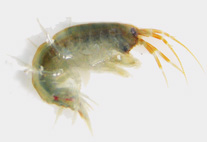Abstract
A new amphipod species of the endemic fauna of Lake Baikal (East Siberia, Russia), Eulimnogammarus messerschmidtii sp. n., from the littoral zone of the northern part of the lake is described. The species is characterized by the presence of a group of spines with dense setae on the last 4 body segments. The basal peduncular segment of antenna 1 bears bunches of dense setae without spines, uropods 3 are covered by dense simple setae without plumose setae and the outer ramus has a second small article. The body length of sampled specimens ranges from 7.5 to 18 mm. Population analysis at one of the sampling points revealed a spring-summer reproduction period for this species. This species was previously erroneously identified as E. cyanoides. E. cyanoides is here redescribed in details based on the lectotype. The differences between E. messerschmidtii sp. n., E. cyanoides and other closely related Eulimnogammarus species are described. The taxonomy of the genus Eulimnogammarus is discussed.

